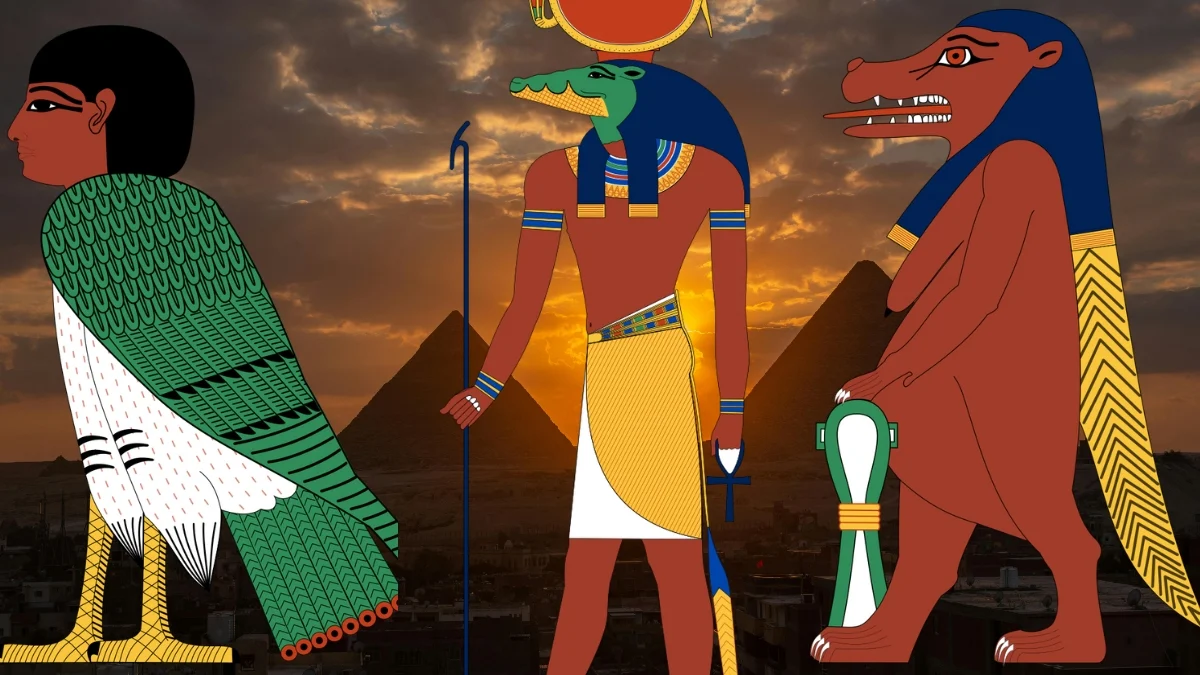
Ancient Egyptian mythology is filled with fascinating creatures – some were guardians, others frightening, and many combined animal traits with symbolic meaning and divine power. These beings appeared in religious texts, on temple walls, and on personal charms, and they influenced Egyptian beliefs about how the world was created, the role of the pharaohs, and what happened after death for over three thousand years.
Here are fifteen of the most fascinating creatures from ancient Egyptian beliefs. Each one was connected to important religious practices, temples, or writings – such as the *Book of the Dead*. Many of these creatures also became symbols of royalty, were used to guard tombs, or were crafted into protective amulets worn by people.
Apep (Apophis)
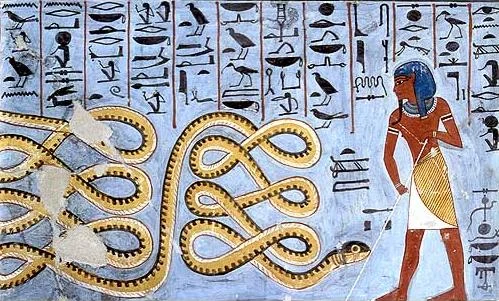
Apep was a giant serpent who represented chaos and darkness, and was a major enemy of the sun god Ra. Ancient Egyptian texts, like the Amduat, describe how Apep tried to stop Ra’s journey across the night sky. Gods and spirits had to fight and defeat Apep each night—binding, cutting, or burning him—to ensure the sun would rise again. The Egyptians took the threat of chaos very seriously, as shown by the spells and images they created to defeat Apep.
Ancient Egyptian priests performed rituals to fight Apep, not just tell stories about it. These were real religious practices meant to maintain order. They involved destroying images of the serpent – crushing, spitting on, or piercing them – to defeat chaos. Egyptians believed eclipses and storms happened when Apep temporarily overpowered the gods, before being defeated again in nightly battles.
Ammit
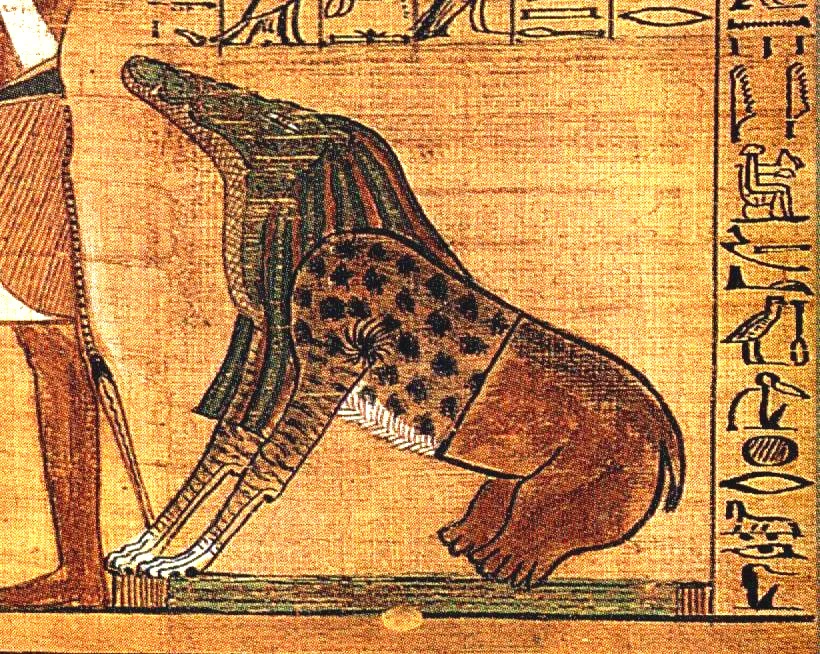
Ammit, a creature with the head of a crocodile, the body of a lion, and the hindquarters of a hippopotamus, stood guard by the scales in the Hall of Ma’at. If a person’s heart was heavier than the feather of truth, Ammit would eat it, meaning they would never reach the afterlife. This terrifying combination of animals – all feared in ancient Egypt – symbolized complete and utter destruction of the soul.
Ancient texts and artwork depict Ammit not as a random monster, but as an enforcer of divine justice. Her job was to ensure that only those who lived ethically could continue into the afterlife, while those who didn’t simply ceased to be. This highlights how important good behavior and the concept of Ma’at – truth, balance, and justice – were believed to be, both in life and after death.
Bennu
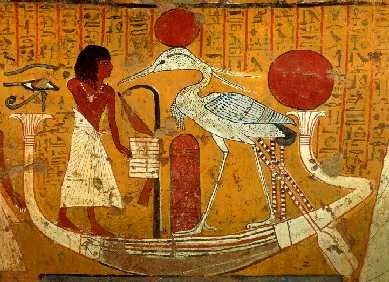
The Bennu is a beautiful, long-legged bird, similar to a heron, that ancient Egyptians associated with creation and being reborn. It was believed to rest on the first land to emerge from the waters of chaos at Heliopolis, announcing the sunrise and the constant renewal of life. While the Bennu inspired the later Greek myth of the phoenix, it held a special meaning in Egypt, closely connected to the sun god Ra-Atum and the origins of the universe.
Ancient Egyptian art, like carvings on temple walls and paintings on burial scrolls, often depicts the Bennu bird perched on important religious objects, such as the benben stone. People also wore amulets and placed heart scarabs decorated with the Bennu, believing these would help them be reborn after death. Because the Bennu represented time, renewal, and the idea of life continuing forever, it was a powerful symbol used in royal settings and during funeral rituals.
The Sphinx
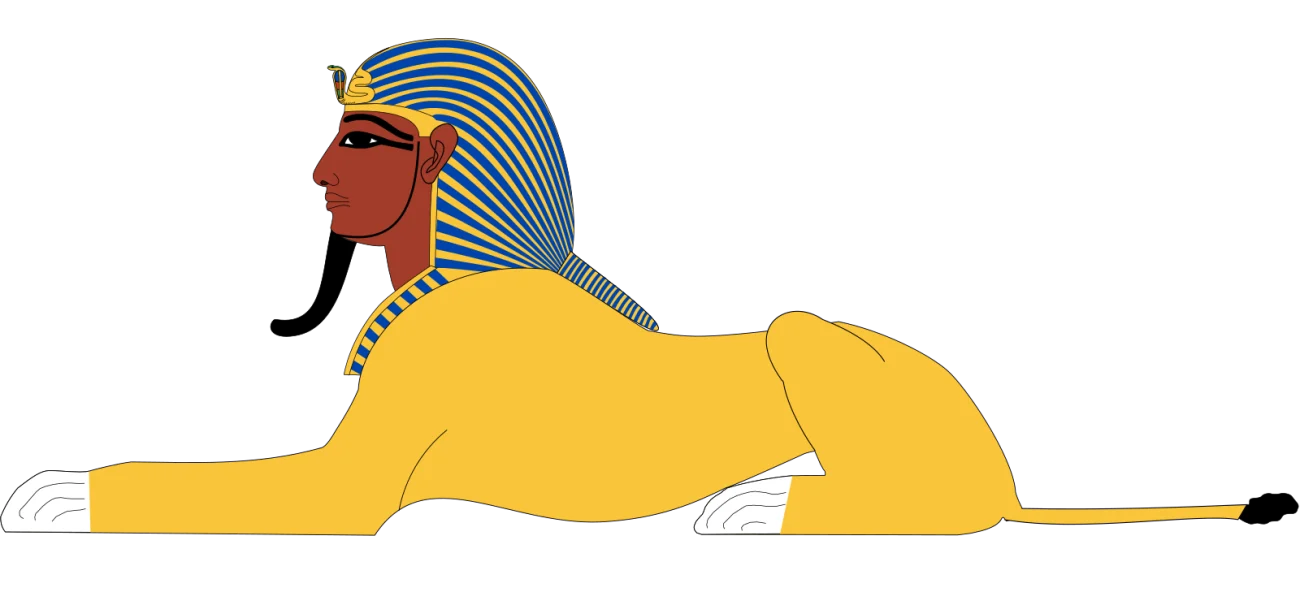
The Egyptian sphinx is a mythical creature with the body of a lion and a human head, representing the power of the pharaohs, watchfulness, and the sun’s energy. The most well-known sphinx, the Great Sphinx of Giza, was carved directly into the rock during Egypt’s Old Kingdom and was connected to religious beliefs about the sun and the pyramids. Egyptian sphinxes, unlike those later created by the Greeks, were seen as guardians of sacred places and symbols of royal authority.
At places like Thebes, grand avenues lined with sphinx statues led to important ceremonial routes. Artwork depicts pharaohs as sphinxes conquering their foes, symbolizing their power and the stability of the universe. Smaller sphinx statues were offered as gifts and placed near temples, linking people to the beliefs of the royal court and the idea of divine protection.
Serpopard
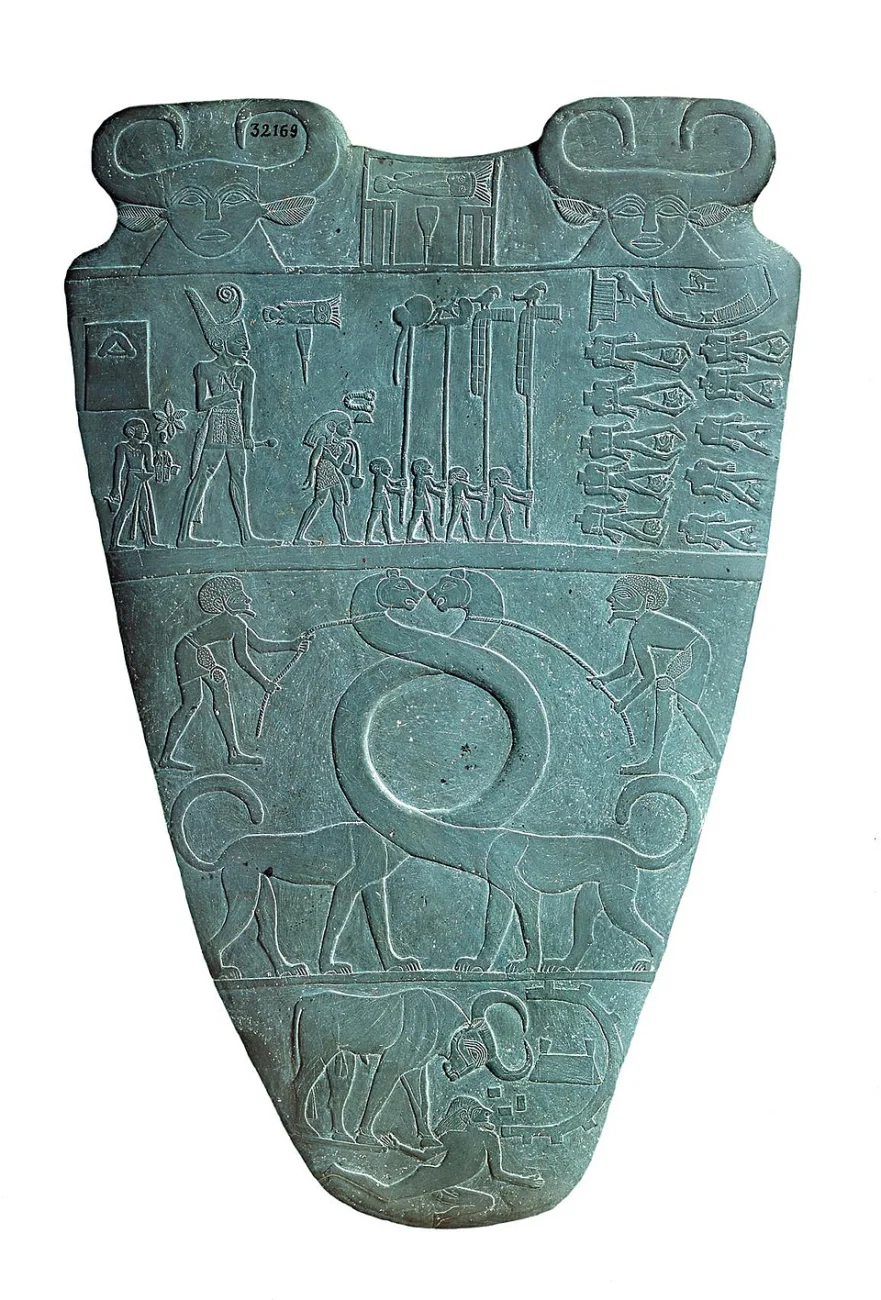
Serpopards – creatures with leopard bodies and long, snake-like necks – are featured in ancient Egyptian art from before the pyramid age, often on ceremonial palettes. These images probably symbolized the power of foreign lands being brought under the control of Egyptian kings. We see rulers depicted mastering or harnessing serpopards in scenes representing the establishment of the Egyptian state.
Serpopards weren’t connected to a particular religious group, but they offer insight into how ancient Egyptians used mythical creatures to represent their power over chaos and foreign territories. Their early depictions show how the developing Egyptian state used these combined animal figures to symbolize the unknown lands beyond their controlled, civilized world.
Uraeus

As a movie buff, I’ve noticed this cool symbol pop up a lot in films about ancient Egypt – it’s the Uraeus, that cobra rising up from the crown! It basically screams ‘king’ or ‘queen,’ showing they have total power and are protected by the gods. Apparently, it represents the goddess Wadjet, and when you see it with a vulture, it symbolizes all of Egypt being united. You’ll find it everywhere – on headbands, above doorways in temples, and even on little charms people wore for protection. It’s a seriously iconic image!
In ancient writings, the Uraeus serpent was often shown destroying enemies and protecting holy places. It symbolized a powerful, living flame for both the king and the gods. Because it frequently appeared on crowns, doorways, and symbols of the sun, the Uraeus connected royal power with religious beliefs, emphasizing the ruler’s duty to uphold justice and cosmic order.
Taweret
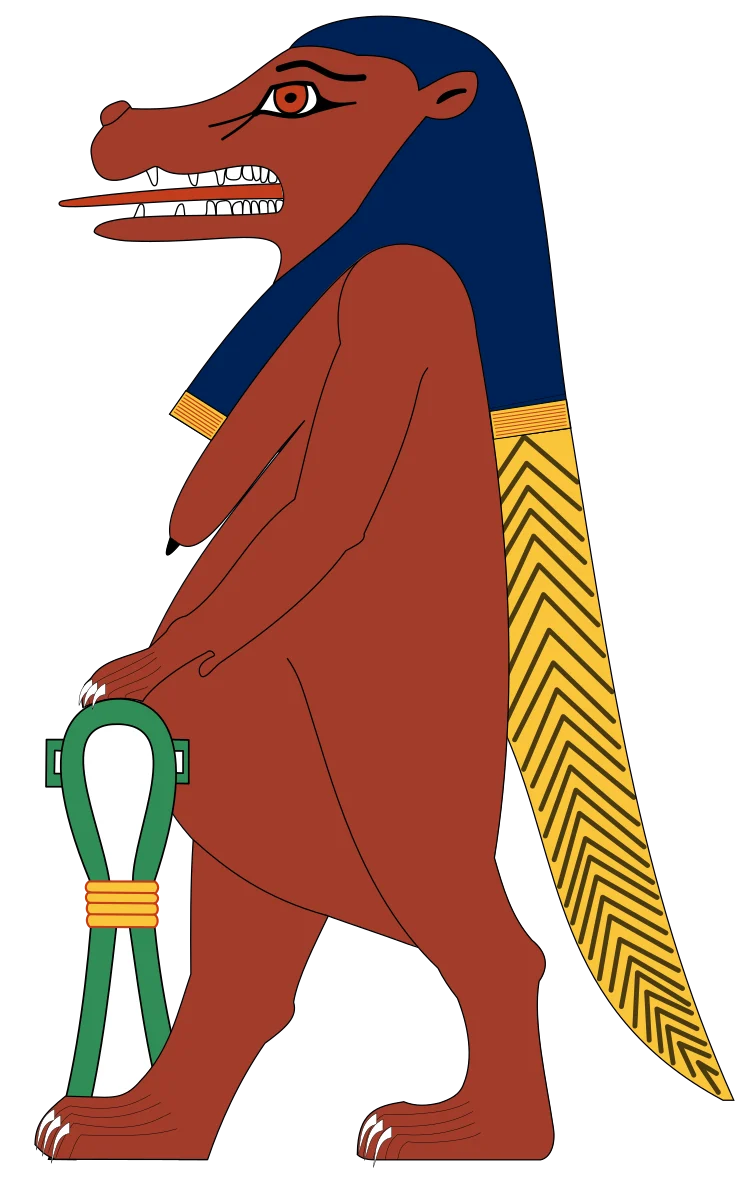
Taweret was an ancient Egyptian goddess with the body of a hippopotamus, the tail of a crocodile, and the legs of a lion. She was a protector of pregnant women, mothers, and the home, and her image was often placed on amulets, beds, and baby items to ward off evil. Her unusual form combined the powerful traits of fierce animals, but instead of aggression, she used her strength to offer safety and security.
Small religious objects found in homes often show the goddess Taweret with Bes, another deity who offered protection. This suggests that people focused on practical, everyday religion, not just worship at large temples. Taweret remained popular for thousands of years – images of her have been discovered dating from the Middle Kingdom all the way through the Greco-Roman period, proving how important she was to families.
The Set Animal (Sha)
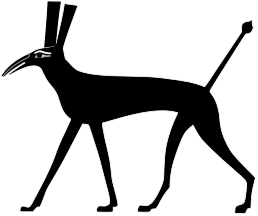
The Set animal, known as the sha, is a mysterious creature representing the god Set. It has a unique appearance with a curved snout, tall, rectangular ears, and a forked tail. It doesn’t resemble any known animal, but experts believe it may be inspired by desert creatures or stylized dogs, giving it an otherworldly quality.
The sha symbol shows up in ancient Egyptian art – on standards, royal scepters, and temple carvings – representing control over harsh desert lands and chaotic powers. Its continued presence demonstrates how Egyptians used the image of this unique creature to express complicated religious beliefs, particularly concepts of uncertainty and transition, and to represent a god who was both difficult and vitally important.
The Scarab (Khepri)
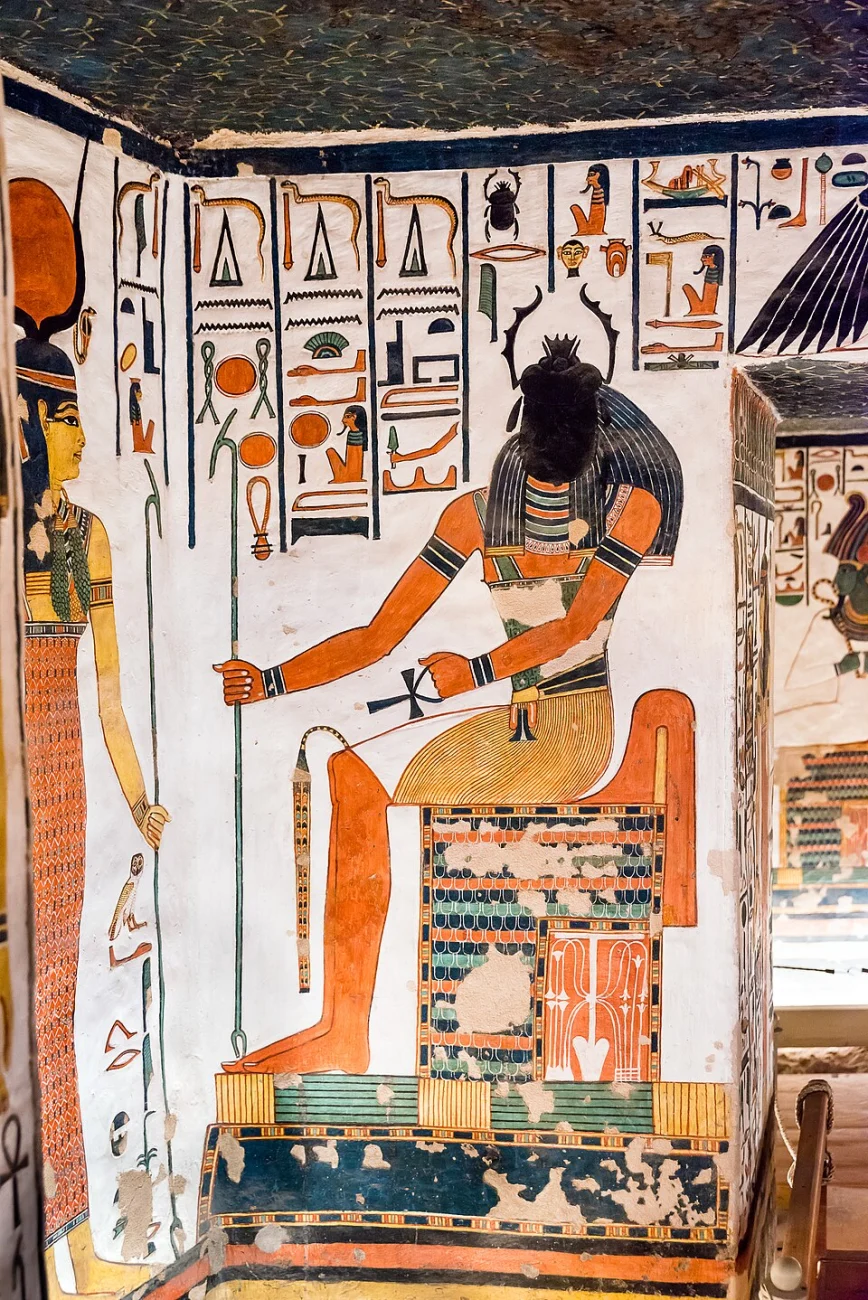
The scarab beetle held deep meaning for ancient Egyptians, representing Khepri, the god of the rising sun and daily renewal. They noticed how dung beetles roll balls of dung and connected this to the sun’s movement across the sky. As a result, scarab amulets became incredibly popular, serving as personal charms for protection, a way to express identity, and as important objects in burial rituals.
Ancient Egyptians placed heart scarabs—amulets inscribed with magical spells—on mummies to help the deceased successfully transform and speak truthfully in the afterlife. These scarabs weren’t just for burials, though. They were also used as seals and jewelry, often featuring images and names that connected daily life to the idea of rebirth and the natural order of the universe, all symbolized by this small but powerful beetle.
Sobek’s Sacred Crocodile
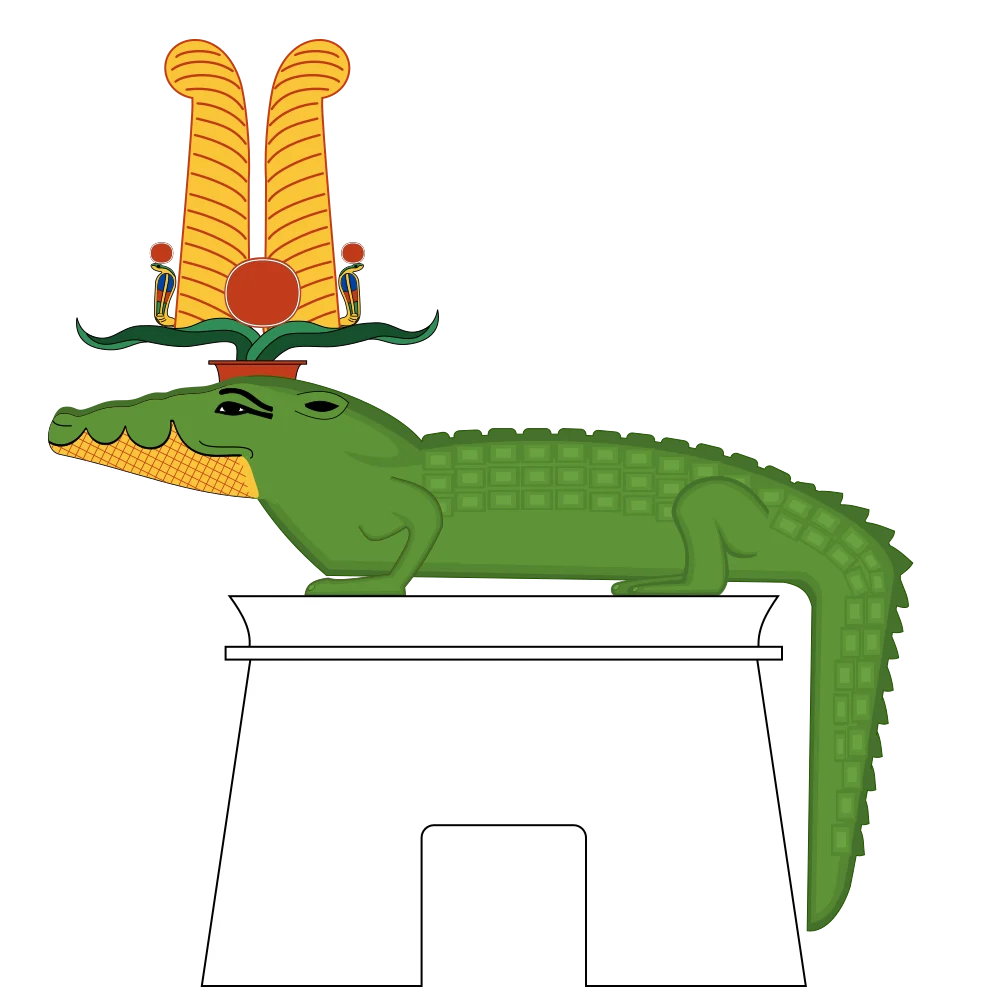
Ancient Egyptians deeply respected crocodiles, especially in the regions of Fayum and Kom Ombo, because they were associated with the god Sobek. Temples kept crocodiles—sometimes even decorating them with jewelry—and carefully mummified them when they died. Sobek’s power and connection to the water symbolized fertility, strength in battle, and the vital floods of the Nile River.
As a long-time admirer of ancient Egyptian culture, I’m always fascinated by what archaeology reveals. They’ve discovered so many incredible things related to crocodiles – not just mummies, but even tiny hatchlings carefully buried, and little statues left as offerings by people hoping for good luck or safety. It’s amazing how the Egyptians saw crocodiles! On one hand, they recognized how powerful and even scary they were, linking them to the strength of their kings and soldiers. But on a local level, people believed crocodiles helped with things like controlling the water for farming and keeping the community healthy. It really shows how deeply connected they were to the Nile and all its creatures.
Anubis’s Jackal
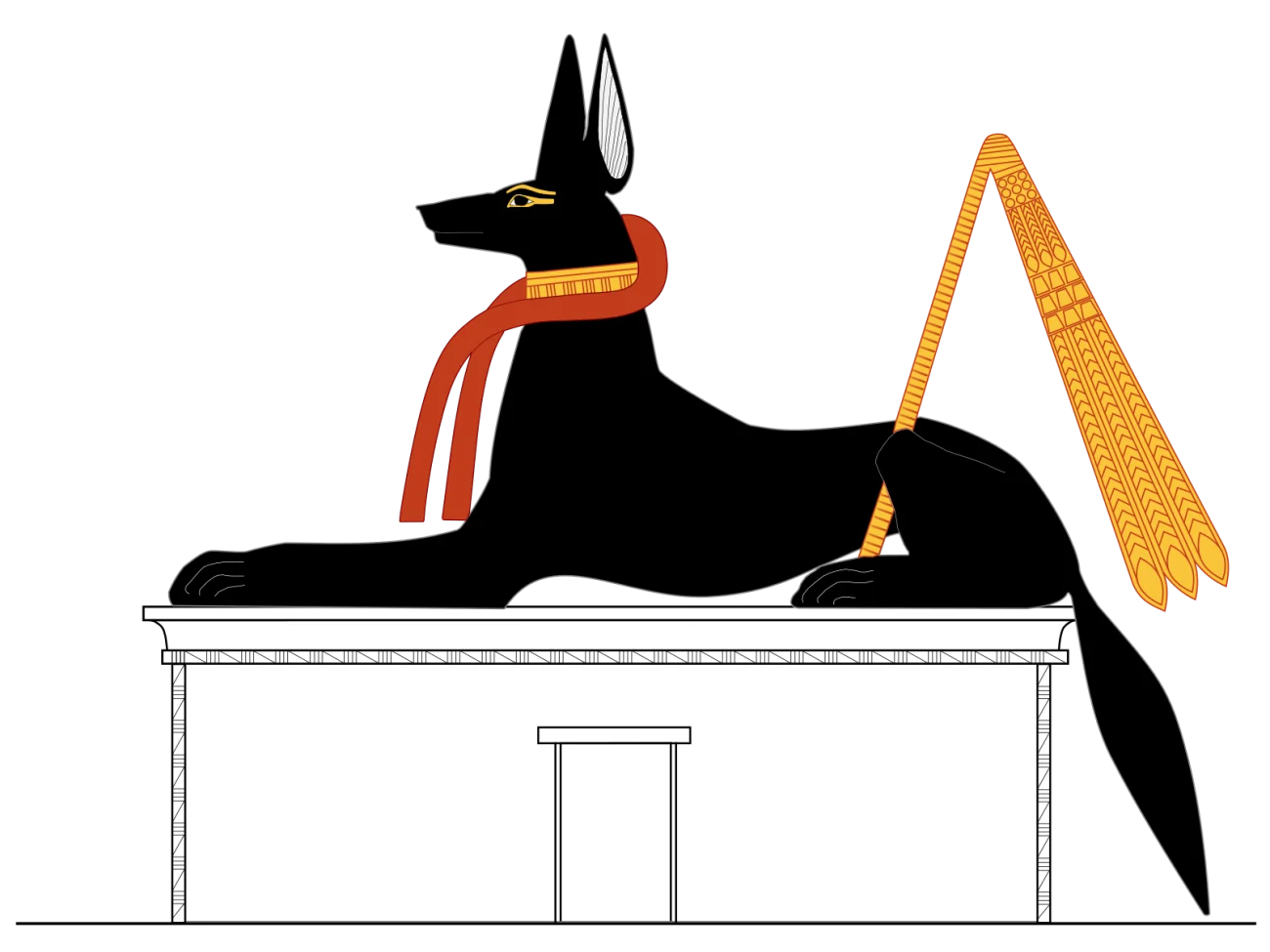
The jackal, closely associated with the god Anubis, became known as the protector of cemeteries and the guide for those who prepared bodies for the afterlife. Because jackals were often seen near burial grounds, the Egyptians imagined them as watchful guardians of the dead and the mummification process. Images of jackals, representing Anubis, were commonly displayed during funeral processions and in spaces dedicated to mummification rituals.
Ancient Egyptian funerary texts and objects frequently featured jackals. These animals were believed to watch over the judgment of the deceased, help with purification rituals, and guard tombs. Jackal imagery on amulets, coffins, and canopic jars was meant to ensure the body was preserved, the proper rituals were performed, and the deceased could safely navigate the afterlife and its judges.
Mehen
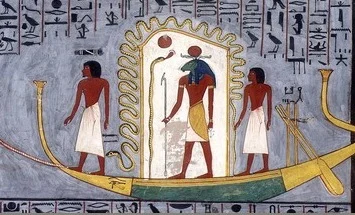
As a movie lover, I’ve always been fascinated by mythology, and the story of Mehen is a cool one. He’s this massive serpent who wraps around the sun god Ra’s boat every night, protecting him on his journey. It’s different than the evil serpent Apep; Mehen’s a good guy, sometimes even shown guarding other gods or people who’ve passed on. What’s really neat is that they found ancient board games named after him, proving he was a well-known protective figure way back in ancient Egypt.
Ancient Egyptian beliefs, as seen in texts about the afterlife, depict the serpent god Mehen as a protective force. His coiled body acts like a living wall, shielding against harm. This positive portrayal of a serpent contrasts with other depictions of serpents as destructive creatures, showing that the Egyptians understood these animals could represent both good and evil depending on their purpose and the situation.
The Ba-Bird
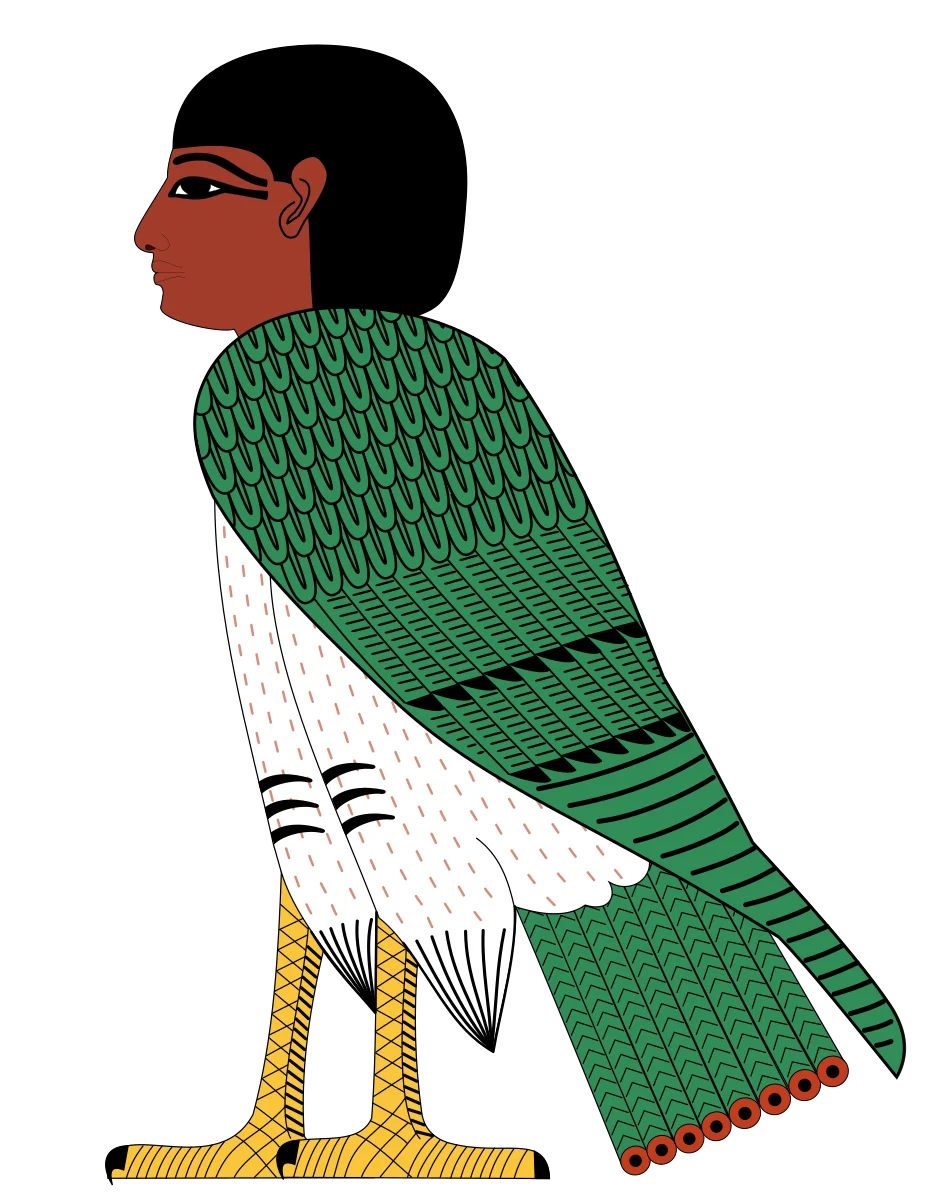
In ancient Egypt, a person’s unique identity – encompassing their personality and ability to move around – was often represented as a bird with a human head. This ‘ba’ could leave the tomb during the day and return at night. Artwork in tombs shows this ba-bird visiting the deceased’s body, receiving gifts, and traveling between the world of the living and the city of the dead. This imagery helped explain how people believed the deceased continued to participate in family rituals and celebrations.
Ancient texts detailed offerings and rituals meant to sustain the *ba*, a part of the soul believed to need nourishment to travel and join with the *akh*, a transformed, effective spiritual state. Images of the *ba* as a bird were commonly painted on coffins and stone slabs as a way to visually confirm this journey and ensure the deceased could still act and have influence in the afterlife.
Aker (The Double Lion)
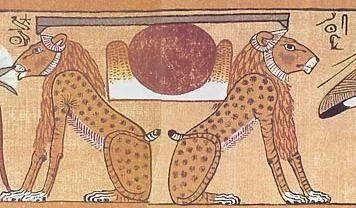
Aker is a mythical creature depicted as two lions facing away from each other, symbolizing the boundary between day and night and guarding where the sun rises and sets. As an earth god, Aker watches over these transitions, representing passages between different realms and times. Images of these paired lions are often found in ancient Egyptian art, particularly in scenes related to death and the sun.
In ancient Egyptian beliefs, the god Aker was seen as a guardian who kept the gates of the underworld secure, controlled dangerous serpents, and ensured the sun’s daily journey. Represented as two lions looking in opposite directions, Aker symbolized the connection between time, the land, and protection. This imagery reinforced the consistent cycle of day and night, which was essential for life on Earth and the passage into the afterlife.
The Scorpion of Serqet
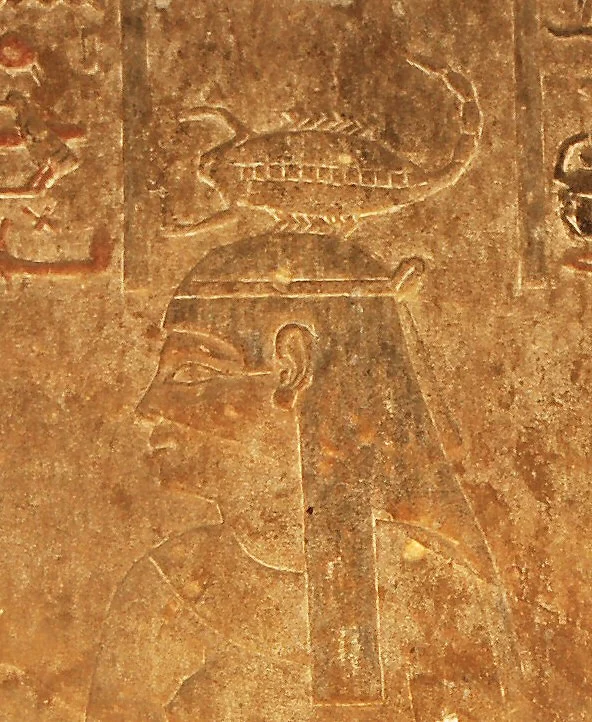
Ancient Egyptians revered scorpions, associating them with the goddess Serqet, who offered protection from venomous bites and ensured people could breathe freely – essential for life. They used scorpion-shaped charms and objects near beds to ask Serqet to prevent stings, which were a common danger in Egypt. After death, Serqet was believed to protect vital organs and help the deceased come back to life.
Ancient medical and religious texts feature spells and treatments that use the image of scorpions to counteract poison. Artwork in temples and writings on coffins show the scorpion goddess Serqet and her animal alongside other protective figures, forming a complete shield around the body, its organs, and the entrance to the tomb.
Read More
- Silver Rate Forecast
- Gold Rate Forecast
- Красный Октябрь акции прогноз. Цена KROT
- MSCI’s Digital Asset Dilemma: A Tech Wrench in the Works!
- Dogecoin’s Big Yawn: Musk’s X Money Launch Leaves Market Unimpressed 🐕💸
- Bitcoin’s Ballet: Will the Bull Pirouette or Stumble? 💃🐂
- Guardian Wealth Doubles Down on LKQ Stock With $1.8 Million Purchase
- Binance and Botim Money Join Forces: Crypto in the UAE Gets a Boost-Or Does It? 🚀
- Twenty One Capital’s NYSE debut sees 20% fall – What scared investors?
- Monster Hunter Stories 3: Twisted Reflection gets a new Habitat Restoration Trailer
2025-10-14 11:17